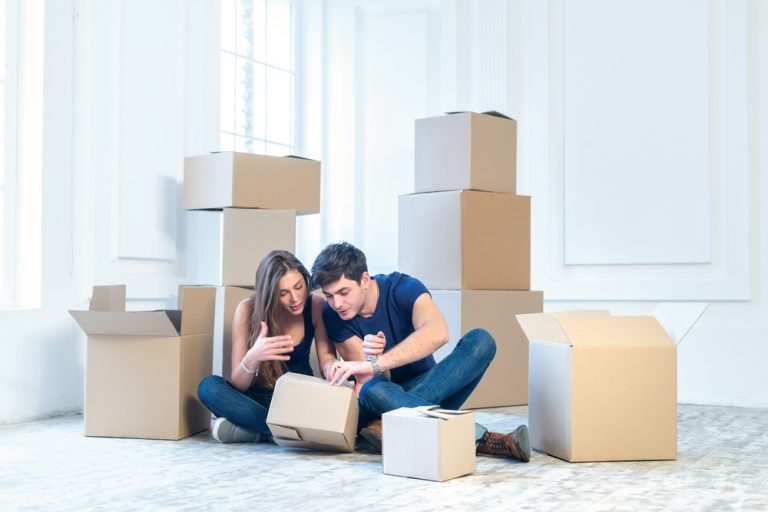Moving is among those challenges that nearly everybody has to experience throughout their lives. It isn’t easy at times and is never a pleasant experience however it always results in a beneficial change in your life. As is true with any activity the success of a project is highly dependent on the ability to find the best method to pack your belongings for the move, avoid common relocation mistakes and prepare ahead to ensure that the process is as smooth as it can be.
Moving can be very stressful. There isn’t a universal guidebook that provides moving tips for every possible situation that might arise throughout the process of moving due to the number of intricate and moving parts involved. Although specific requirements and concerns could differ from one individual to the next (e.g. what to do to transport glassware, delicate antiques, or how to move costly cabinetry in a safe manner). These basic guidelines can be useful.
Basic packing and moving tips for those who are not experienced
The process of getting everything prepared for your move starts with the proper packing. Because goods may be organized according to common purposes, space use, and other factors making it easier to maintain track of your possessions while moving and unpacking at your new home. Here are some simple suggestions for packing your items to prepare for moving:
- It is essential to ensure that boxes are not overloaded to the capacity of the box. This way, excess weight is avoided and the risk of a box breaking or being thrown during the transportation is decreased.
- Similar goods should be grouped together. To protect your possessions, cushion each box using old wraps, newspapers, or other soft household items. Start with heavier items and work your way to the lighter ones. Each box should be labeled with the name of the room as well as the contents.
- Be sure to have a basic survival kit. You should have a variety of essential items to pack for the move, like food, beverages, toothbrush, changing clothes, paper plates, mugs, prescriptions, and a first aid kit.
Instead, you may save time and energy while also relieving back pain and tension by calling a professional moving company. Professionals can help you find the best solution for your budget and needs, no matter if you are planning to do it yourself or require help with lifting heavy objects. You can call Zeromax moving to assist you with NYC relocation.
The first step of a move is to collect your packing supplies
The following moving materials will be required to ensure an effortless and stress-free relocation:
- Dolly. Moving boxes from one area to another is dangerous and physically exhausting. Dolly rentals from home improvement stores and moving companies can aid you in avoiding these situations.
- Moving boxes. They are available for cheap or at no cost from a variety of sources. Use a variety of websites to look for second-hand boxes, or ask your buddies or relatives for recommendations. You can make your own list of boxes you’ll need to put in the quickest manner for the relocation.
- Bubble wrap (protective material). Moving with bubble wrap is a good option as it will keep your belongings safe from ceramic pots to Therma Tru doors. Additionally, it’s inexpensive and is available in office supplies or department shops, or you may obtain it for free from social media sites.
To make sure you don’t lose anything during the move, label all of your boxes clearly. Keep track of what’s inside the box by writing the room’s name, the contents, and whether or not anything is delicate on the top and sides of the box.

Essential organizing and packing tips
Sort your stuff room-by-room into three piles. You can save what you need, give away the remainder, or simply throw them away. It makes packing easier because you only carry the things you really need. These are important things to think about:
- Make sure you use the appropriate-sized boxes. When packing your books for moving, you should place them and other heavy items in small boxes. Smaller items, such as pillows and linens, can be put in bigger boxes. It is possible to divide your books into several boxes when you have a lot of them. Professional movers from New York are often annoyed by large boxes that are packed with heavy objects. Aside from the fact that they make the task more challenging, they also could break.
- Moving the kitchen requires special attention. There are numerous methods to pack dishes for moving. For instance, one method that is the most efficient for packing your food items for moving is to put a protective barrier around each dish with packing paper. Then, you can bundle multiple dishes in a single layer of packing paper. Dishes should be placed on their sides, not flat. Also, you should add plenty of padding to the sides and top. Bowls and cups can be placed on top of each other and covered with paper. Then, wrap three to four pieces into a single package. The most efficient method to store them all is in dish-barrel containers. When packing glasses for a relocation, choose a container with cardboard partitions to help preserve the glass. Cover them in many sheets of material to keep them safe from breaking and damage.
- Learn how to pack a TV properly to move it. To safeguard TVs during transportation, it’s common to have movers use furniture cushions. There are some disadvantages to transporting plasma TVs in the packaging in the first place like the fact that they may be damaged if laid on their backs. Double-pack your TV using DIY packing. Place the box holding the TV in a different container, lined using packing sheets.
Moving can be a challenge, but it is possible with the right mindset and preparation.

